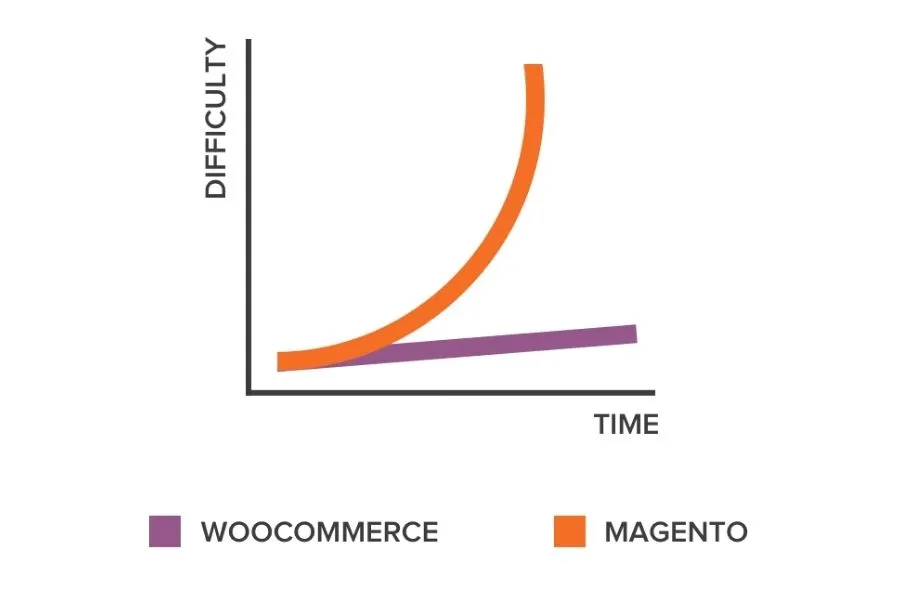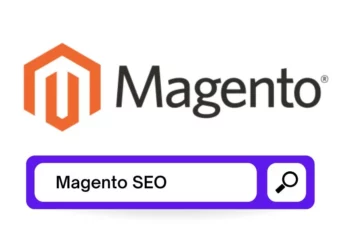Pros and Cons of Magento for eCommerce Platforms
Magento is one of the big names in the e-commerce world, and for good reason. It currently powers over 250,000 online stores and is trusted by major brands like Coca-Cola, Nike, and Helly Hansen. What makes it so popular? For many, it’s the flexibility, deep customization, and the ability to scale as your business grows. But Magento isn’t perfect, and it’s definitely not the right fit for everyone.
In this blog, we’ll break down the real pros and cons of Magento so you can decide if it’s the best platform for your online store.
Claue – Clean and Minimal Magento Theme
We provide an amazing Magento theme with fast and responsive designs. Let’s find out!
Pros of Magento E-commerce Platform
Magento is packed with features that give your online store a competitive edge.
Open-Source and Unlimited Customization
Magento Open Source is completely free to download and use. Because it’s fully open-source, you get 100% access to the entire codebase. Your developers can dive into core modules, build custom extensions, or override default behaviors to craft unique storefronts.
Based on a vibrant global community and Adobe’s ongoing contributions, Magento has continuous enhancements, security patches, and bug fixes. Your store will be at the cutting edge without waiting on a single vendor’s roadmap.
Extension Marketplace

Magento’s Extension Marketplace hosts over 9,000 free or premium extensions and themes. It gives merchants a near-limitless toolkit to enhance their stores without rebuilding core functionality from scratch.
Every extension within the marketplace goes through Adobe’s Assurance Program, which vets code quality, security, and compatibility before listing. Nearly 4,000 modules are specifically built for Magento 2, so they will leverage the platform’s latest APIs and performance enhancements. Merchants can deploy critical features in days rather than weeks.
Scalable Architecture and Performance
Magento can handle 500,000+ SKUs on a single server and process thousands of transactions per hour. Because it has a modular design, full-page caching, and indexing capabilities.
Magento’s modular architecture splits the platform into client, page cache, application, and database tiers, so each can be scaled independently to match demand. Out of the box, Magento 2 can process significantly more orders per hour on the same hardware and offers near-instant server response times. Large catalogs aren’t a problem either: stores managing over one million SKUs routinely leverage Magento’s selective indexing and block-level caching to keep page loads snappy under heavy traffic.
Advanced SEO Capabilities

Magento 2 comes with powerful SEO tools:
- Automatically rewrites URLs to strip out index.php and stop words for clean, crawl-friendly links.
- Merchants can customize meta titles, descriptions, keywords, and image alt tags at the product, category, and CMS page level or use template-driven auto-generation to scale across thousands of SKUs
- Magento 2 generates XML sitemaps on a cron schedule (and optional HTML sitemaps via extensions) for every new page that is promptly discovered by search engines.
- Built-in support for canonical tags, robots.txt editing, and hreflang controls
Magento has a complete toolkit to boost crawlability, prevent duplicate content issues, and improve visibility in search results.
Mobile-First Responsive Themes
Magento 2’s default Blank and Luma themes employ a mobile-first, responsive design. Your store will adapt seamlessly to any screen size without extra development effort.
Robust Security and Regular Updates

Magento takes security seriously with a dedicated Security Center, quarterly security bulletins, and rapid-response patches that address everything. Each security patch (e.g., the 2.4.6-p10 release) comes with detailed release notes and clear instructions. Merchants can apply fixes promptly and maintain compliance with standards like PCI DSS and NIST.
Beyond Adobe’s releases, a vibrant community of developers contributes ongoing security enhancements, backport patches, and best-practice guides. Magento’s modular architecture allows isolating and updating individual components without overhauling the entire platform. These processes form a robust security framework that helps keep your eCommerce site safe against evolving cyber threats.
Strong Community Support
Magento has a thriving global community of over 150,000 active developers. The official Magento forums alone host more than 480,667 registered users and over 210,000 discussion threads. You will easily find answers, plug into peer support, or start conversations about advanced customization and performance tuning.
Beyond forums, Magento’s GitHub repository attracts 1,500+ active contributors, resulting in the core platform and its modules evolving rapidly. Additionally, there are 14,000+ agencies and solution partners worldwide specializing in Magento implementations.
Comprehensive Integration Options
Need to connect to shipping providers, marketing tools, or region-specific payment gateways? Magento has you covered. You can tap into a huge marketplace of ready-made extensions or build custom connectors thanks to its open-source architecture and API-first approach.
The result you receive is a streamlined, unified commerce experience where data flows automatically between systems. That means fewer manual processes, fewer errors, and more time to focus on growing your business.
Built-In B2C and B2B Functionality
Magento handles both retail (B2C) and wholesale (B2B) business models.
For B2C, you get everything you’d expect: guest checkout, wishlists, advanced promotions, and personalized shopping powered by AI. On the B2B side, Magento gives you features like company accounts, multi-user permissions, tiered pricing, shared catalogs, quote requests, and purchase order support.
The best part is all managed from a single admin interface. You can serve every type of customer, individual or business, with consistent pricing, product data, and a seamless experience across all your sales channels.
Trusted by Major Global Brands
Magento is the platform behind some of the world’s most recognized brands, including Coca-Cola, Nike, Helly Hansen, and Christian Louboutin. These companies choose Magento because it can handle high traffic, support complex needs, and scale as their business grows.
Cons of Magento E-commerce Platform
Magento is a powerhouse platform, but it comes with its own set of challenges. Below is a concise summary followed by a detailed list of key drawbacks you should consider before committing to Magento.
High Cost of Development and Maintenance

Even though Magento Open Source is free to download, customizing it to fit business needs, through development, extensions, integrations, and ongoing support, can become very expensive compared to SaaS alternatives.
Customizing Magento to meet unique business requirements typically requires seasoned PHP developers with specialized agencies. Initial build costs frequently range from $70,000 to $150,000 or more for a full-featured store, plus monthly support retainers of $5,000–$10,000 to handle feature enhancements and bug fixes.
On top of these human-resource costs, Magento Commerce and Commerce Cloud carry annual licensing fees. It starts at $22,000 and $40,000, and scales up to $125,000–$190,000 for merchants with over $25 million in revenue.
Moreover, Magento’s resource-intensive architecture demands robust, often premium-tier hosting solutions to maintain acceptable performance.
Steep Learning Curve

Magento’s complex, modular structure and developer-focused design make new users face a steep learning curve. To get comfortable with it, you need solid PHP skills, a deep understanding of Magento’s architecture, and time, sometimes months, to get fully up to speed.
For teams without Magento experience, even simple tasks like updating themes or installing extensions can be tricky and time-consuming. Tasks like asset compilation, static content deployment, and cache management are part of everyday workflows and can slow things down if you’re not familiar.
Because of this, many businesses either invest in specialized training or hire experienced Magento developers, which can add to project costs and timelines. It’s a powerful tool, no doubt, but one that demands time, skill, and resources to use effectively.
Need for Technical Expertise
Magento isn’t the kind of platform most teams can just pick up and run with. Customizing or upgrading your store requires strong knowledge of PHP, JavaScript, and MySQL, plus a solid understanding of Magento’s unique architecture.
Even basic changes often call for working with things like dependency injection, the EAV data model, and complex deployment processes. Tasks like setting up infrastructure, managing cache, or generating static content can go beyond the skills of a typical in-house developer.
Because of this, many businesses end up relying on certified Magento developers or specialized agencies. It means higher costs and longer timelines, even for smaller tweaks. For teams without dedicated technical resources, Magento can be powerful but hard to manage on their own.
Performance Issues on Shared or Low-End Hosting
Magento needs serious resources to run smoothly. On shared or budget hosting, it often struggles with some problems, like pages loading slowly, timeouts are common, and the user experience takes a hit.
Shared environments often lack enough CPU, memory, or proper PHP configuration to handle Magento’s workload. Add in things like database-heavy operations, static content generation.
Without tools like Varnish or Redis, every user request puts extra strain on the server. It slows down time-to-first-byte and hurts Core Web Vitals. Even “noisy neighbors” on shared servers can also hog resources, then your store will be more unpredictable.
In the end, if you’re running Magento on underpowered hosting, slowdowns and downtime are almost guaranteed, especially during traffic spikes. To get reliable speed and stability, upgrading to a VPS, dedicated server, or managed Magento-optimized cloud hosting is usually the only real solution.
Long Setup and Customization Time
Magento gives you a lot of flexibility, but getting from install to launch can take time. Even a basic setup includes multiple steps and can take hours, especially for complex servers. And that’s only before any customization begins.
When you add custom features, integrate third-party tools, or design the look, it will take a long time, from weeks to even months of development and testing.
If your team isn’t already experienced with Magento, things like module conflicts, schema updates, or deployment setups can cause delays. That’s why many Magento projects take 3 to 6 months (or more) to reach the finish line.
Difficulty Finding Qualified Developers

The platform’s complexity takes more than just general PHP experience. Developers need hands-on Magento knowledge to build, customize, and maintain a store properly.
Experienced PHP devs often need months of practice and formal training to get comfortable with Magento’s architecture. As a result, the pool of certified or deeply experienced Magento developers is relatively small.
Complex Hosting and Maintenance Requirements
To run smoothly, Magento demands multiple layers of caching like Varnish and Redis, search tools like Elasticsearch, and enough memory (often 4–8 GB RAM).
Ongoing upkeep is also an important part of the job. Security patches, software updates, version upgrades, cron jobs, and database tuning all need attention. Without proper management, stores risk slowdowns, unexpected outages, or security vulnerabilities.
Magento gives you full control, but that control comes with responsibility, and usually, the need for expert help.
Most standard shared hosting solutions simply don’t cut it. That’s why many merchants turn to managed Magento hosting providers or invest in dedicated infrastructure. It can mean monthly costs in the hundreds or more.
Who is Magento Best For (Based on the Pros and Cons of Magento)?
Magento is best suited for growing businesses and enterprises that need a highly customizable, scalable eCommerce platform with B2B and B2C capabilities.
Large Enterprises and High-Volume Retailers
Magento is a great fit for large enterprises and high-volume retailers. It can handle hundreds of thousands of SKUs, massive catalogs, and thousands of transactions every hour. Big names like Coca-Cola, Nike, and Helly Hansen rely on Magento to keep things running smoothly. If you consider that scale, flexibility, and performance are critical, Magento delivers.
B2B Companies with Complex Workflows
With native tools like customer-specific pricing, bulk ordering, purchase order approvals, and quote negotiation, Magento is trusted by manufacturers and distributors managing thousands of SKUs and multi-tiered buying teams. Adobe reports that B2B merchants using Magento see up to 50% faster quote-to-order conversion and 30% reductions in manual processes.
Multi-Store and Global Brands
Magento is built for multi-store and global brands that need flexibility at scale. Businesses can manage multiple storefronts, languages, currencies, and region-specific pricing from a single admin dashboard.
Businesses Needing Deep Customization
Magento lets you modify every layer of the codebase. This platform is ideal for companies with unique UX/UI requirements or bespoke backend integrations (ERP, CRM, PIM) via REST and GraphQL APIs.
Conclusion
We just put on the scale the pros and cons of Magento for e-commerce platforms. This platform offers unmatched flexibility, scalability, and deep customization. At the same time, it demands considerable technical expertise, longer setup times, and ongoing maintenance. Magento is best suited for organizations prepared to invest in a robust, long-term solution rather than those looking for a quick or low-effort launch.
Contact US – ArrowTheme:
– Email: [email protected]
– Facebook: Facebook.com/ArrowThemeTeam
– Website: ArrowTheme.com
Read more: Magento Web Development: How to Develop an E-commerce Site



